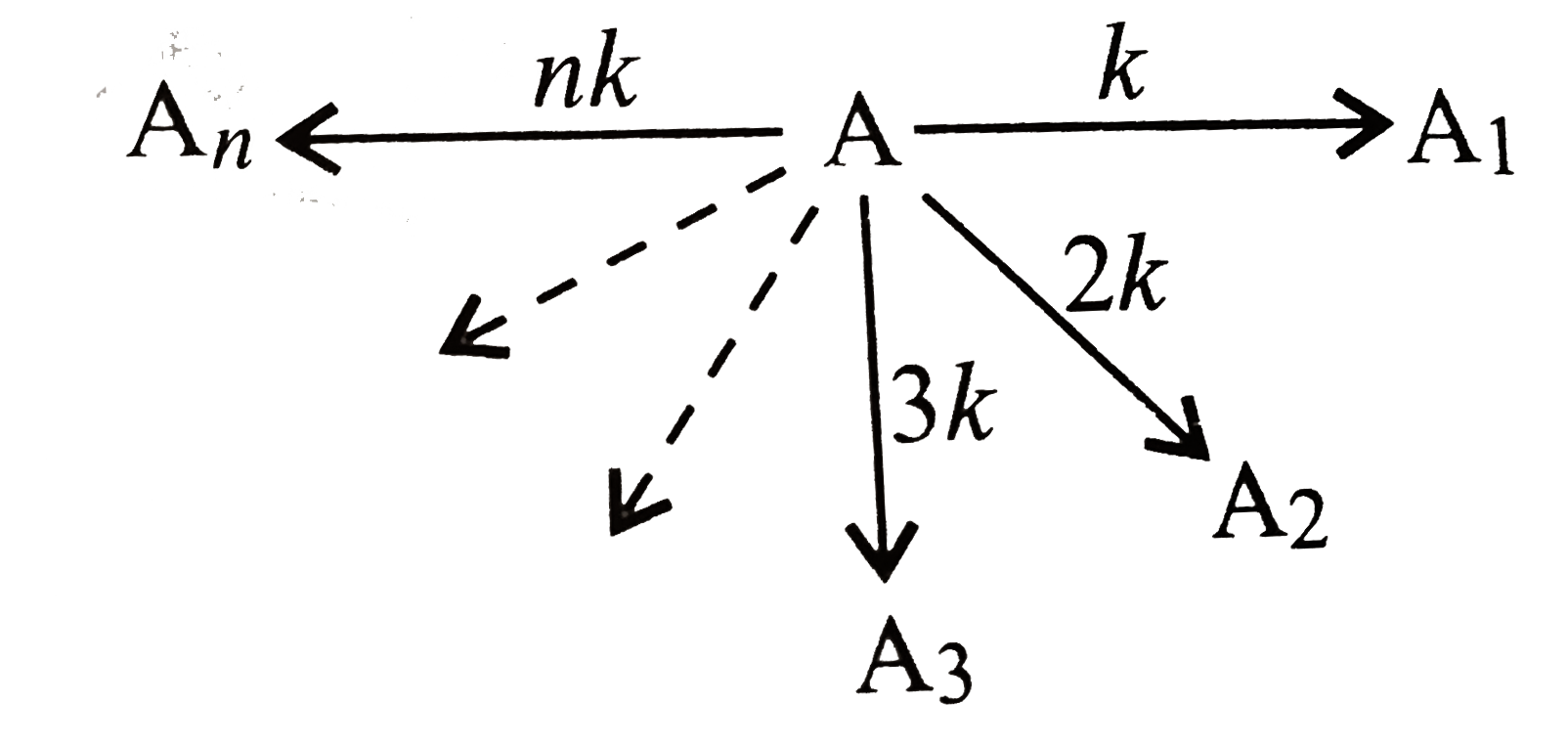Which of the following expression can be used to describe the instantaneous rate of the reaction ?
2A+B→A2B
(a) 12−d[A]dt
(b) −d[A]dt
(c) 12d[A2B]dt
(d) 12−d[A]dt.d[B]dt
12−d[A]dt
−d[A]dt
12d[A2B]dt
12−d[A]dt.d[B]dt
The correct Answer is:A
To determine the instantaneous rate of the reaction 2A+B→A2B, we need to consider the stoichiometry of the reaction and how the rate is expressed in terms of the change in concentration of the reactants and products over time.
1. Identify the Reaction and Stoichiometry:
The reaction is given as 2A+B→A2B. Here, the coefficients indicate how many moles of each substance are involved in the reaction.
2. Define the Rate of Reaction:
The rate of a reaction can be expressed in terms of the change in concentration of the reactants and products. For the given reaction, the rate can be defined as:
Rate=−12d(A)dt=−11d(B)dt=11d(A2B)dt
Here, the negative sign indicates that the concentration of reactants is decreasing, while the product's concentration is increasing.
3. Choose the Correct Expression:
From the definitions above, we can see that the instantaneous rate of the reaction can be expressed as:
Rate=−12d(A)dt
This matches option (a).
4. Evaluate Other Options:
- Option (b) −d(A)dt does not account for the stoichiometric coefficient of 2.
- Option (c) 12d(A2B)dt is incorrect because it does not have the correct stoichiometric relationship.
- Option (d) 12(−d(A)dt)(d(B)dt) is not a valid expression for the rate of reaction.
Conclusion:
The correct expression that can be used to describe the instantaneous rate of the reaction is:
Answer: (a) 12(−d(A)dt)
The reaction is given as 2A+B→A2B. Here, the coefficients indicate how many moles of each substance are involved in the reaction.
The rate of a reaction can be expressed in terms of the change in concentration of the reactants and products. For the given reaction, the rate can be defined as:
Rate=−12d(A)dt=−11d(B)dt=11d(A2B)dt
Here, the negative sign indicates that the concentration of reactants is decreasing, while the product's concentration is increasing.
From the definitions above, we can see that the instantaneous rate of the reaction can be expressed as:
Rate=−12d(A)dt
This matches option (a).
- Option (b) −d(A)dt does not account for the stoichiometric coefficient of 2.
- Option (c) 12d(A2B)dt is incorrect because it does not have the correct stoichiometric relationship.
- Option (d) 12(−d(A)dt)(d(B)dt) is not a valid expression for the rate of reaction.
The correct expression that can be used to describe the instantaneous rate of the reaction is:
Answer: (a) 12(−d(A)dt)
Topper's Solved these Questions
- CHEMICAL KINETICSBOOK - CENGAGE CHEMISTRY ENGLISHCHAPTER - CHEMICAL KINETICSEXERCISE - Solved Example
52 Videos
- CHEMICAL KINETICSBOOK - CENGAGE CHEMISTRY ENGLISHCHAPTER - CHEMICAL KINETICSEXERCISE - Ex 4.1 (Objective)
9 Videos
- CARBOXYLIC ACIDS AND THEIR DERIVATIVESBOOK - CENGAGE CHEMISTRY ENGLISHCHAPTER - CARBOXYLIC ACIDS AND THEIR DERIVATIVESEXERCISE - Exercises Archives (Analytical And Descriptive)
34 Videos
- COORDINATION COMPOUNDSBOOK - CENGAGE CHEMISTRY ENGLISHCHAPTER - COORDINATION COMPOUNDSEXERCISE - Archives Subjective
18 Videos
Similar Questions
Knowledge Check
If x=t2andy=t3 , then d2ydx2 is equal to: a) 32 b) 32t c) 32t d) 34t
A32B32tC32tD34t
The rate of a reaction is expressed in different ways as follows:
+12d[C]dt=−13d[D]dt=+14d[A]dt=−d[B]dt
the reaction is
View SolutionFor the reaction : A+2B→C+D, the expression of rate of reaction will be :
View SolutionIf tanθ=t,thentan2θ+sec2θ is equal to (a) 1+t1−t (b) 1−t1+t (c) 2t1−t (d) 2t1+t
View SolutionIf 3A→2B, then the rate of reaction of +dBdt is equal to
View SolutionFor the reaction,
2NO(g)+2H2(g)→N2(g)+2H2O(g)
The rate expression can be written in the following ways:
d[N2]dt=k1[NO][H2],d[H2O]dt=k2[NO][H2]
−d[NO]dt=k3[NO][H2],−d[H2]dt=k4[NO][H2]
The relationship between k1,k2,k3,k4 is
View SolutionABC is a right triangle right-angled at A and AD⊥BC . Then, BDDC= mm (a) (ABAC)2 (b) ABAC (c) (ABAD)2 (d) ABAD
View SolutionFor the reaction B+2D→3T,−d[B]dt=k[B][D]2. The expression for −d[D]dt will be
View Solution

